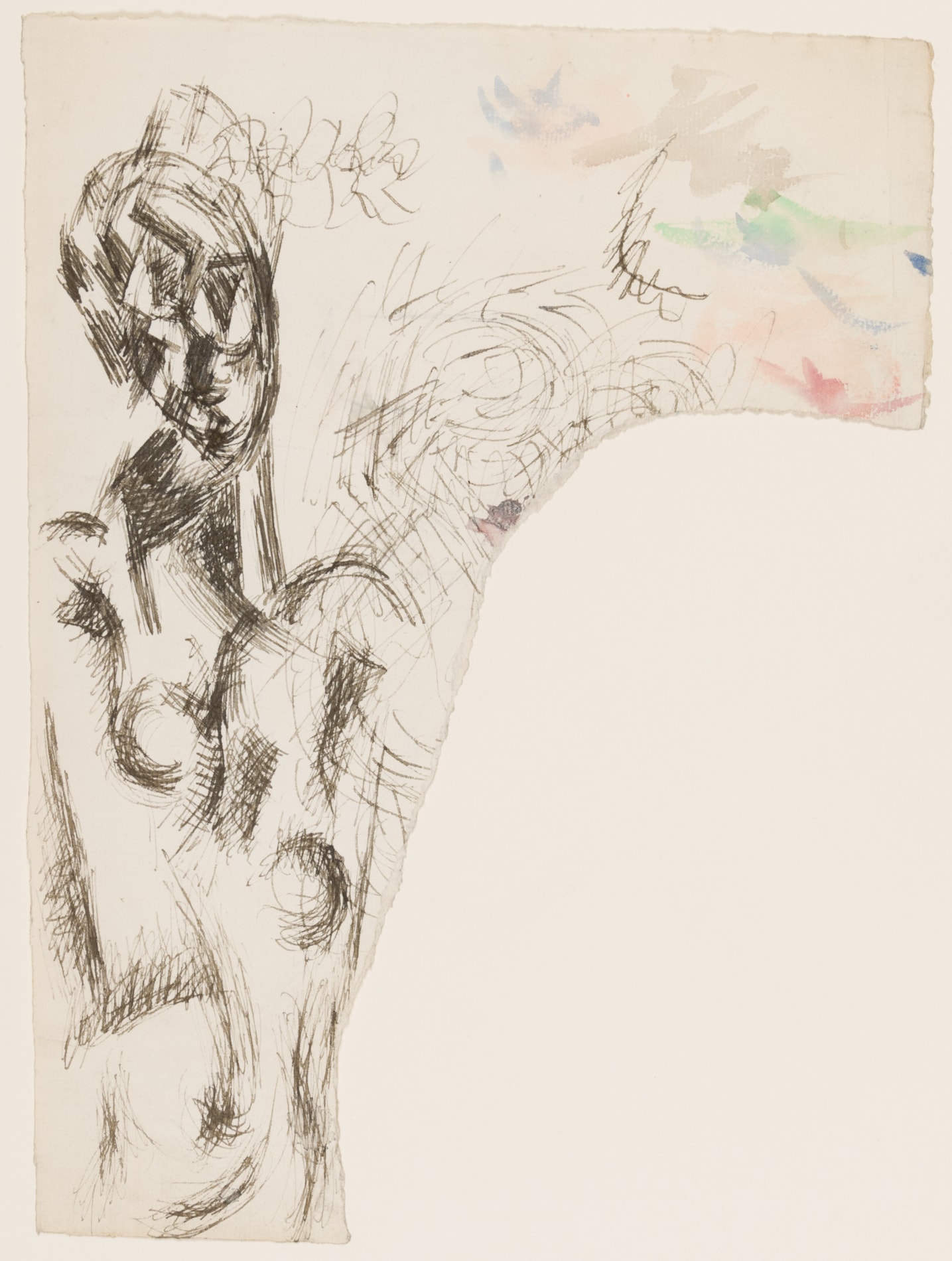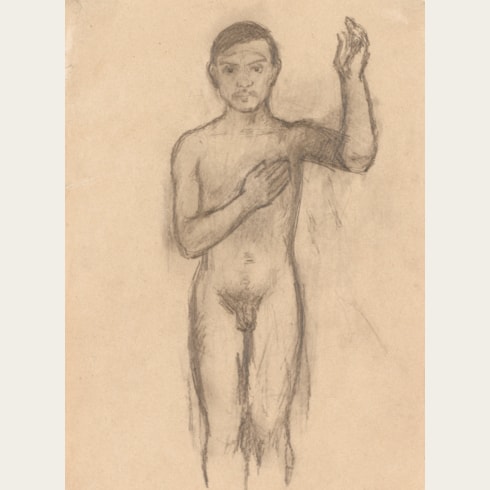Pablo PICASSO
(Malaga 1881 - Mougins 1973)
Torso of a Nude Woman
A partial study of a glass, a fruit and other objects drawn in black ink on the verso.
Dated 1908-1909 and numbered and inscribed, by different hands, 1127 / 6, Z 26/382 and Inv. 1095 on the verso.
318 x 239 mm. (12 1/2 x 9 3/8 in.) at greatest dimensions.
This drawing may be related, both stylistically and thematically, with a sheet of three studies of a female nude in pen and ink in the Musée Picasso in Paris, as well as a pen, ink and tinted wash study of a nude with a raised arm, in the same collection. To this group may be added two stylistically comparable drawings of female nudes of approximately the same date, as well as another in the Merivale-Austin collection. All of these drawings may further be linked with a larger and more finished watercolour study of a standing female nude, datable to the autumn of 1909, which is in a private collection in New York, as well as a painting of a seated female nude of 1908-1909, formerly in the collection of Sergei Shchukin and now in the State Hermitage Museum in St. Petersburg.
Working with a fine pen, instead of the charcoal or graphite common to most of his drawings of 1906-1907, Picasso has here aimed at - as one scholar has noted of a similar pen drawing of about the same date - ‘a more carefully considered analysis of form…He meticulously drew the hatching with short, filleted strokes…This technique was perfectly suited to Picasso’s task: the integration of the faceted planes of the figure into a cohesive and decorative design.’
The subject of this drawing, and its related works, is likely to be Fernande Olivier, Picasso’s lover and companion between 1904 and 1912, who lived with the artist in his Parisian studio in the Bateau Lavoir in Montmartre between 1905 and 1909. As one Picasso scholar has noted of Fernande, her presence in the artist’s studio ‘was clearly essential to [Picasso] during these years of artistic and personal struggle…More often than not, Picasso’s depictions of women during the years he and Fernande lived together (especially from 1906 to 1909) reflect her physical presence in the studio…in the vast majority of his figure compositions, Picasso had absorbed her body and features so completely into his visual vocabulary that most of the women became, as it were, generic Fernandes.’ In the present sheet, Fernande’s features have been flattened and contorted into a more abstract form, as is seen in several other drawings of this period.
The still life elements sketched on the verso of the sheet may be associated with a series of still life paintings and drawings - depicting jugs, pitchers, glasses, bowls and fruit on a table – produced by Picasso in his Paris studio between the autumn of 1907 and the spring of 1910. Characterized by simple geometric forms, depicted with a certain monumentality, these still life compositions can be seen as a sort of homage to those of Cézanne. As the artist’s biographer John Richardson has written, ‘To take his mind off the Demoiselles, Picasso turned his attention to still life – a genre he had yet to tackle in any depth...Between the fall of 1907 and the spring of 1908, Picasso pitted himself against Cézanne in a series of deceptively simple-looking paintings of utilitarian objects – bowls, jars, saucers, jugs - ...Picasso dramatizes and individualizes these mundane things so forcefully…that their very tension seems to reflect the tensions of their creator’s existence.’
The present sheet was until recently in the collection of the artist’s granddaughter Marina Ruiz Picasso (b.1951), the only daughter of Picasso’s eldest son Paulo. Though her relationships with both her father and grandfather were somewhat fraught, Marina was the only legitimate grandchild of the artist alive at the time of his death in 1973, and as such received the second-largest inheritance of works from Picasso’s estate, after that of his second wife Jacqueline. As Richardson has noted, Marina Picasso ‘differs from the artist’s other five heirs in that she has made a point of exhibiting as much as possible of her magnificent collection in a succession of traveling exhibitions…for students of modern art in cities which have never seen a Picasso retrospective, these exhibitions have been a revelation.’ This drawing from the Marina Picasso collection, however, appears not to have previously been exhibited.
‘I do not know if I am a great painter, but I am a great draughtsman.’ (Picasso to Max Jacob).
Provenance
By inheritance to the artist’s granddaughter, Marina Picasso, Cannes, Geneva and New York.
Literature
























